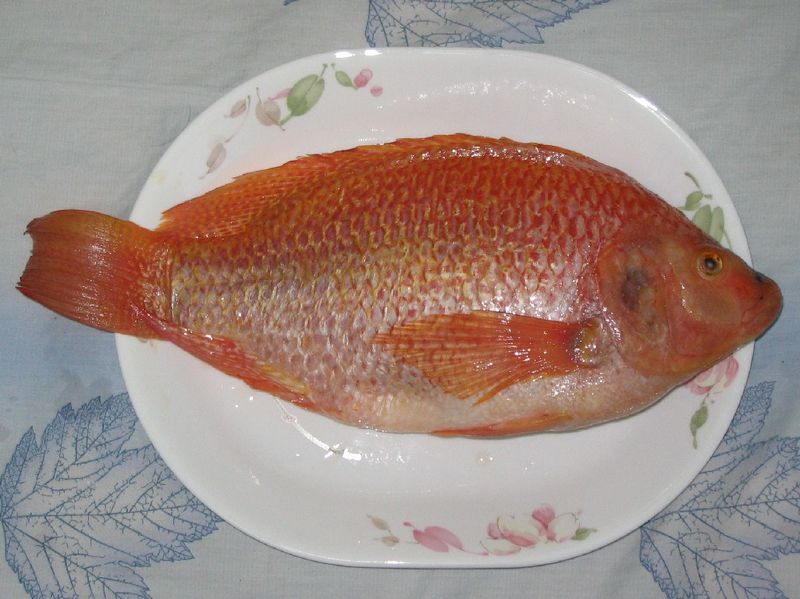

Check-list of the freshwater fishes of Africa (CLOFFA). In: Daget J, Gosse J-P, Teugels GG, Thys van den Audenaerde DFE, eds. London, UK: British Museum of Natural History, 583 pp. Tilapiine fishes of the genera Sarotherodon, Oreochromis and Danakilia. État des connaissances sur la faune ichtyologique des bassins côtiers de Côte d’Ivoire et de l’ouest du Ghana. Teugels GG Lévêque C Paugy D Traoré K, 1988. 2003 IUCN Red List of Threatened Species. Geographical overviews presented at the PARADI Symposium, Senegal, 15-20 November 1993. Biological diversity of African fresh- and brackish water fishes. In: Teugels GG, Guégan JF, Albaret JJ, eds. Faune ichtyologique des eaux douces d’Afrique de l’Ouest. Tilapia stock identification using electrophoretic markers. New York: Plenum Publishing Corporation, 591-616. Synopsis of biological data on Sarotherodon galilaeus. Entry for Sarotherodon galilaeus galilaeus. FAO, Rome, Italy: Food and Agricultural Organization of the United Nations.įishBase, 2004. FAO Database on Introduced Aquatic Species. Manila, Philippines: Asian Fish Society.įAO, 1997. In: De Silva SS, ed., Exotic aquatic organisms in Asia, Proceedings of the Workshop on Introduction of Exotic Aquatic Organisms in Asia, p 63-70, Asian Fish Soc. Present status of aquatic organisms introduced into Japan. Gland, Switzerland: IUCN, 378 pp.Ĭhiba K Taki Y Sakai K Oozeki Y, 1989. 1996 IUCN red list of threatened animals. Guide to the fishes of the River Nile in the Republic of the Sudan. While chromosomal and quantitative DNA changes accompanied phyletic evolution in the six cichlids, there is no evidence that these modifications were associated with speciation.Arkhipchuk VV, 1999. Since the quantity and distribution of constitutive heterochromatin was the same in both species, it is suggested that the 'extra' DNA may be distributed interstitially throughout the genome. aureus possessed approximately 15% more nuclear DNA than S. simonis, but differed significantly within Sarotherodon. Among closely related taxa, DNA was equivalent in Tr.


The quantity of DNA from erythrocyte nuclei varied significantly among the six species. zillii (IN = 0.49) which lacked conspicuous centromeric heterochromatin in 10 to 12 chromosomes. Differentiation in C-banding was noted between these species and the related tilapine T. In both species, constitutive heterochromatin occurred in the centromeric region of all chromosomes and in the short arms of some submetacentrics. galilaeus were indistinguishable with general cytological stains. Within Tristramella, the two very closely related species (IN = 0.95) displayed gross karyotypic similarity. More detailed cytological analysis in some species revealed nucleolus-organizer regions and the presence of chromosome associations. Only Haplochromis flaviijosephi contained distinct metacentric chromosomes. 1, relative frequency and nature of submetacentrics, and distribution of C-bands (constitutive heterochromatin). Differentiation included variation in the length of chromosome no. While cytological differentiation was minimal, some changes in chromosomal morphology were noted among genera. Diploid chromosome number was 44 in all fishes. Electrophoretic similarity ranged from IN = 0.25 to IN = 0.95 and closely approximated formal taxonomic relationships among these species. Estimates of electrophoretic similarity at 21 isozyme loci provided a temporal framework used to evaluate genetic changes. All six species are reproductively isolated from each other. galilaeus, and Tilapia zillii) and restricted Middle Eastern endemics (Haplochromis flaviijosephi, Tristramella sacra and Tr. The studied species included sympatric representatives of widespread African taxa (Sarotherodon aureus, S. Chromosomal and biochemical differentiation were investigated among six species of Old World cichlid fishes from the Sea of Galilee, Israel.


 0 kommentar(er)
0 kommentar(er)
